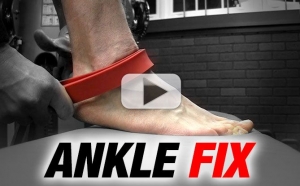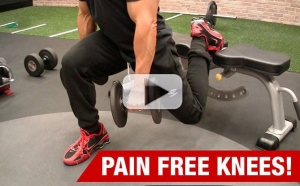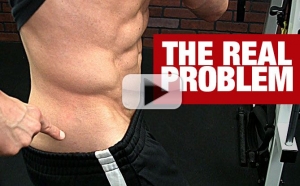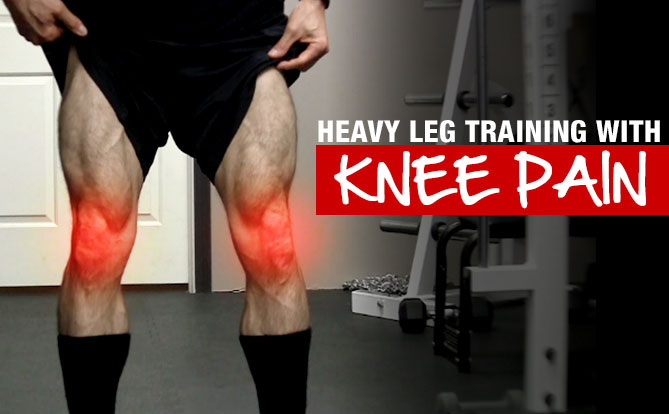
TRAINING LEGS WITH KNEE PAIN
Do you get knee pain when you train legs? If so, do you avoid training your legs altogether?
BIG MISTAKE!
The truth is, leg workouts can be downright crippling if you attempt them with bad knees.
That doesn’t mean you should be skipping leg day though!
If you want to have any shot at keeping your legs strong, you’ve got to learn to train around discomfort without having to fight through it.
The moment you stop working your legs is the moment you’ve got nothing left at all, because your leg muscles anchor you through every single movement you do.
Having an athletic background, I pretty much trashed my knees back in 1993 or so and they’ve never really recovered from bad knees since! I’m going to show you the exact leg workout I do (quads and hamstrings) that allows me to keep building leg strength without sacrificing my ability to walk!
This leg exercise program contains carefully selected leg exercises that are closed-chain and functional with a high degree of athletic carryover. Great care is taken to keep the force shifting down and back as opposed to down and forward to make sure that the knee joint doesn’t take on unnecessary strain and extra stress.
When you try these exercises you’ll see that it is possible to train legs with minimal knee pain and without risking further knee damage.
Before we begin, I want to give you a layout of the terrain when it comes to legs, so I’ve included a leg muscle anatomy illustration below. If you want more information on those specific muscles, I cover them in depth in the Perfect Leg Workout.
BEST QUADS EXERCISES FOR KNEE PROBLEMS
This leg workout will begin with a focus on controlled squats using some isometric and pause techniques to help minimize the impact on the knee joint.
Whether they be isometric or pause variations, there is one important key with these squats.
You want to be in control of each and every single rep.
You can begin to add weight once and only once you have complete control over the weight you are squatting.
In my case I’m going to begin with 135 lbs and do an Isometric Squat Hold. My goal is told hold this for about 20 seconds to build some good stability and to feel like I have a good foundation. It also helps me to test how stable or sore my knees are on any given day.
1.) ISOMETRIC SQUAT HOLD


Today, my knees felt pretty good so I’ve moved to a Pause Squat using 225 lbs.
It’s important to note that I’m not looking to push heavy, heavy weight like I used to. For me, it’s all about stability and strength, and to be able to hold my body in the functional positions I know I’ll need to perform.
For an athlete, that’s going to be way down deep in this squat position.
Be sure your starting position is with feet flat on the floor and that they don’t lift up off the ground as you lower.
2.) PAUSE SQUAT


Ultimately, I work my way up to around 315 lbs with the Pause Squats.
During all of my sets I need to make sure that my legs and knees always feel good and that I always feel in control of what I’m doing. I’ve had too many issues with bum knees in the past to want to push things too far or risk causing chronic knee pain from using bad form as I tire out.
3.) PAUSE SQUAT W/ADDITIONAL LOAD

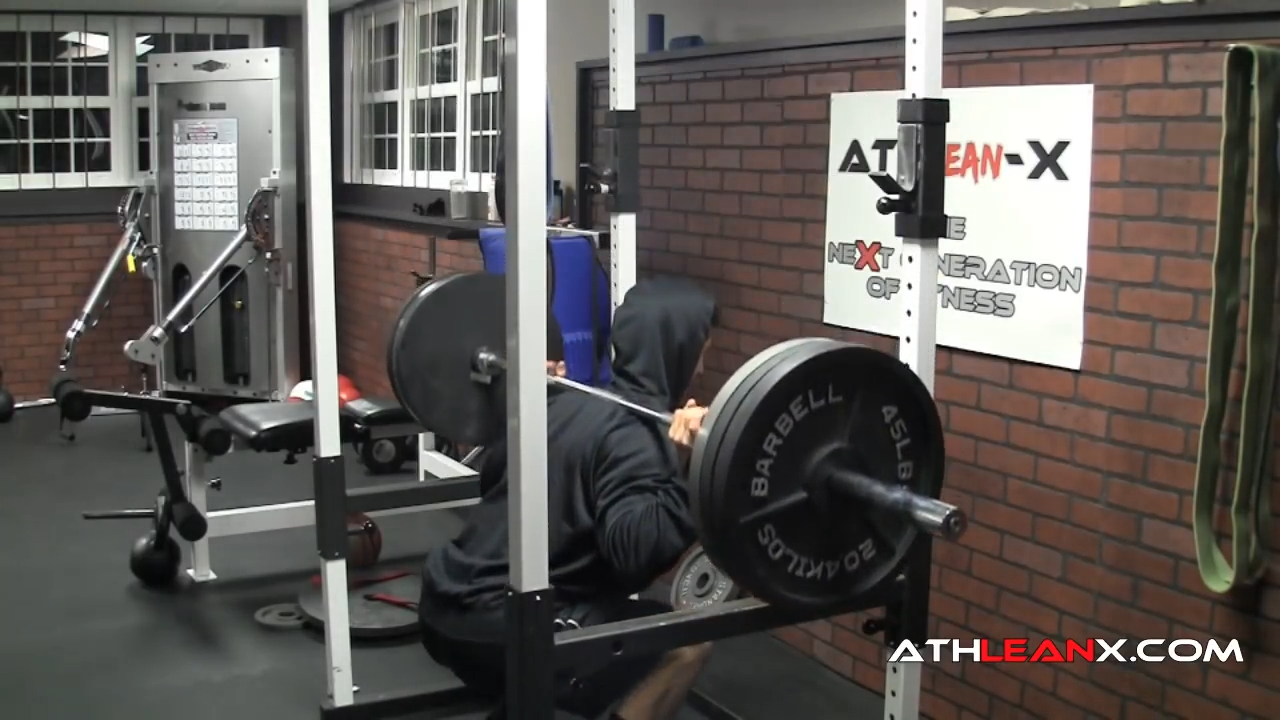
Next I’m going to move on to one of my all-time favorite exercises for legs, the Reverse Lunge.
This exercise can be loaded up pretty heavy without the knee injury repercussions associated with normal front knee lunges. The joint stress is taken off of the patellar tendon with the backward movement of the leg.
I prefer to do this with a barbell because I don’t have to worry about my grip giving out as I’m moving the heavier weights. For this workout I load mine at 225 lbs.
Starting position is with feet hip width apart with your loaded bar in position. Then bring your left foot back behind you, lowering down until your left knee almost touches the ground, body remaining upright. Return to start and then repeat on the right leg.
4.) REVERSE LUNGE

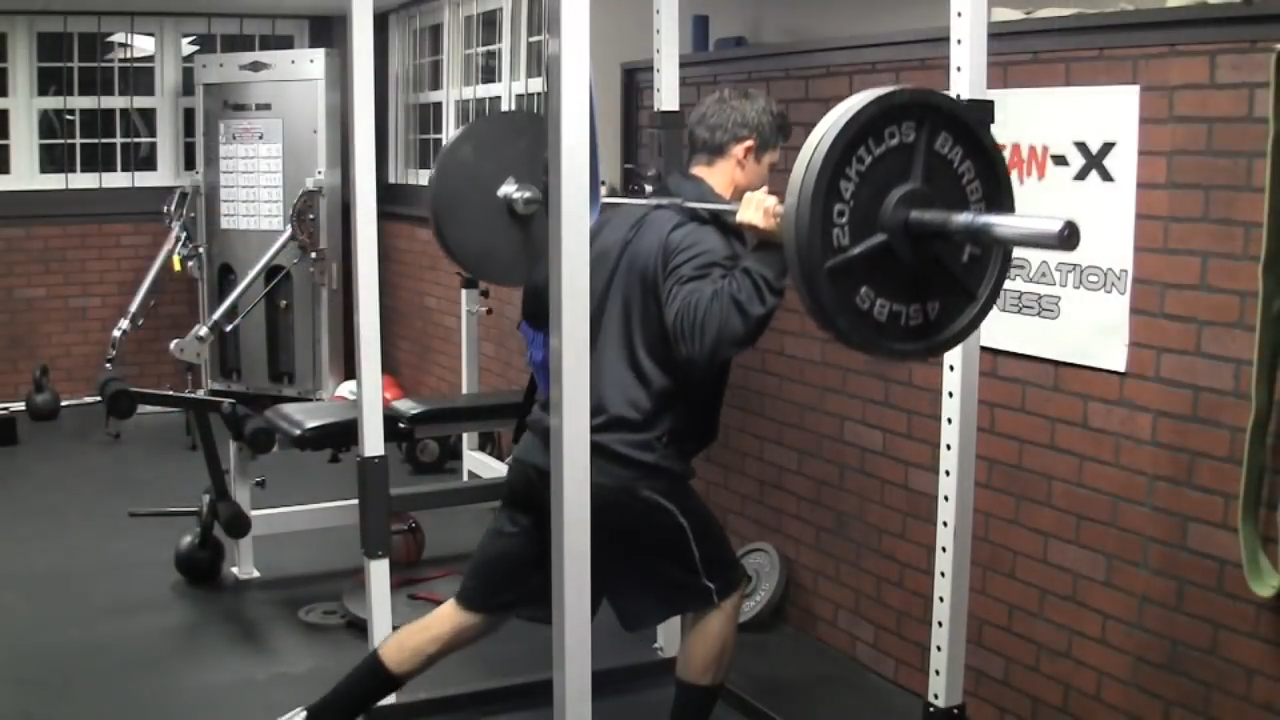
I follow this with another favorite with an athletic carryover, the Dumbbell Bulgarian Split Squat Hop. I’m adding the slight hop to the split squat for an additional acceleration component.
In this split squat position I don’t feel a lot of knee joint pain because my weight is traveling down and back. Any time I try to move my weight down and forward, such as in a forward-stepping lunge, I get knee pain. But if I can go backward, as I do in a Bulgarian Split Squat, I don’t feel the pain as much.
I’m using 65 lb dumbbells here. We really want to explode up as fast as we can on these. It’s really more about acceleration because I can’t move those 65’s all that fast. I’ll perform these to failure.
5.) dumbbell BULGARIAN SPLIT SQUAT HOP

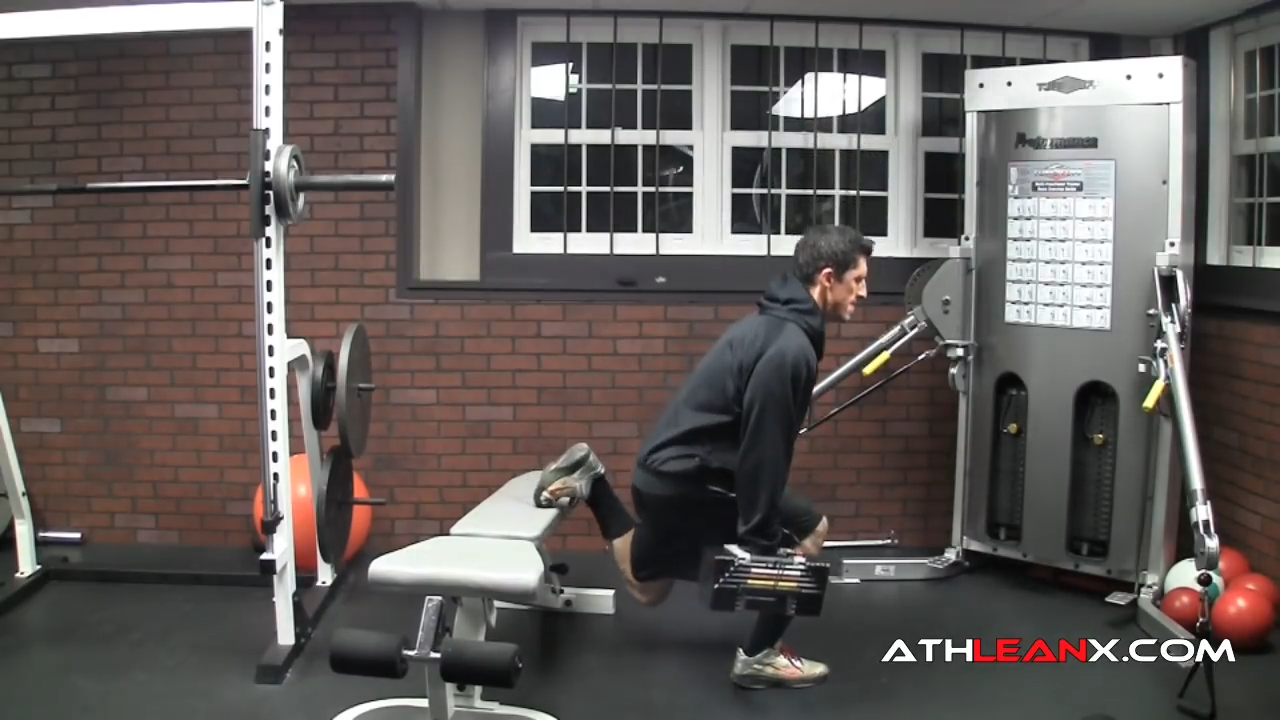
You can maximize the work on the quads and hamstring muscles and make it even more explosive by immediately dropping into a bodyweight version of this after reaching failure.
So next I’ll drop the weights and do some faster Bodyweight Bulgarian Split Squat Hops to failure.
6.) BODYWEIGHT BULGARIAN SPLIT SQUAT HOP


best HAMSTRINGS EXERCISES FOR KNEE PROBLEMS
For the back side of the legs, I don’t like to do open-chain exercises like lying hamstrings curls.
I prefer to focus on better closed-chain alternatives. In case you’re not aware of the difference let’s go over it quickly.
In an open-chain exercise, the body is stationary while the limb moves, such as when you’re using most gym machines. In a closed-chain exercise, the limb is stationary while the body moves like in most movements that we perform with dumbbells or barbells. Closed-chain movements involve more muscles and joints and therefore are preferable for helping to create stability around a joint.
Some examples of open-chain exercises are hamstring curls machines, leg extension machines and the leg-press machine. It’s better to stay away from these since they don’t offer enough knee joint stability and will do nothing to help knee strength. Done incorrectly, they may actually cause a bout of knee pain or a knee injury!
For my knee-friendly leg workout, I’ve got two favorite closed-chain alternatives to the typical open-chain machine based hamstring exercises.
The Physioball Glute Ham Raise is one of the best closed-chain options for overloading the hams and the gluteal muscles.
Starting position is kneeling with knees knees on the floor hip-width apart and tops of the feet on the floor. Place one hand on a physioball in front of you and begin to lower your upper body toward the floor as much as your range of motion will allow you to, maintaining your body in a straight line from your head to your knees.
As I move myself out and extend into eccentric hamstring overload, I then can use the ball as my spot to grab in case I go too far. Then I will use the ball to work concentrically, pulling that hamstring back up to get a really intense contraction.
It’s important in this and most other exercises to really focus on the eccentric component. I feel like if you can’t control the eccentric component, you have no business doing the concentric part of it!
1.) PHYSIOBALL GLUTE HAM RAISE

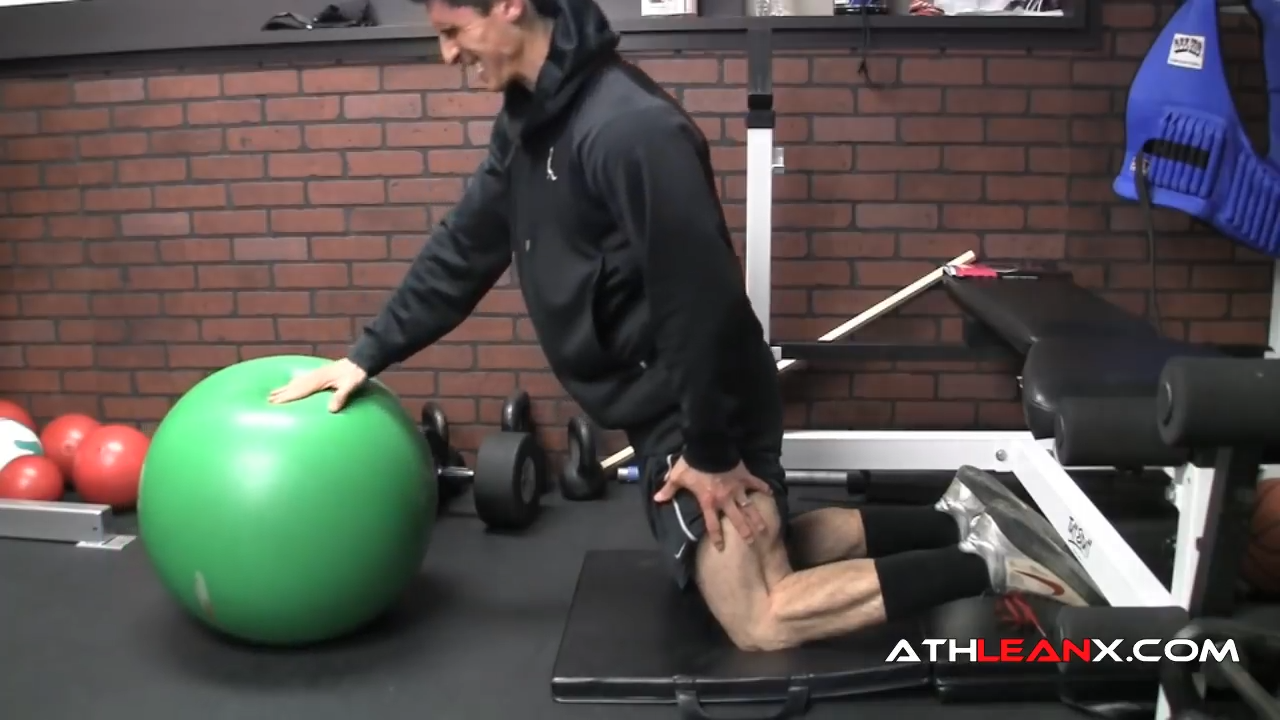
Then finally we’ll move on to a Barbell Hip Thrust. This is another great closed-chain exercise that allows you to build strength in the hamstrings without putting stress on the knee joint.
I’m using 205 lbs on the bar. Start with your feet shoulder width apart on the floor and keep them in contact with the floor as you lift your glutes off the floor. Push the bar forward on your hips so it doesn’t roll back towards you.
You want to find that comfort spot sinking into the crease of your hips so the barbell doesn’t feel uncomfortable. You can always lay a couple of towels over you if that becomes an issue.
2.) BARBELL HIP THRUST

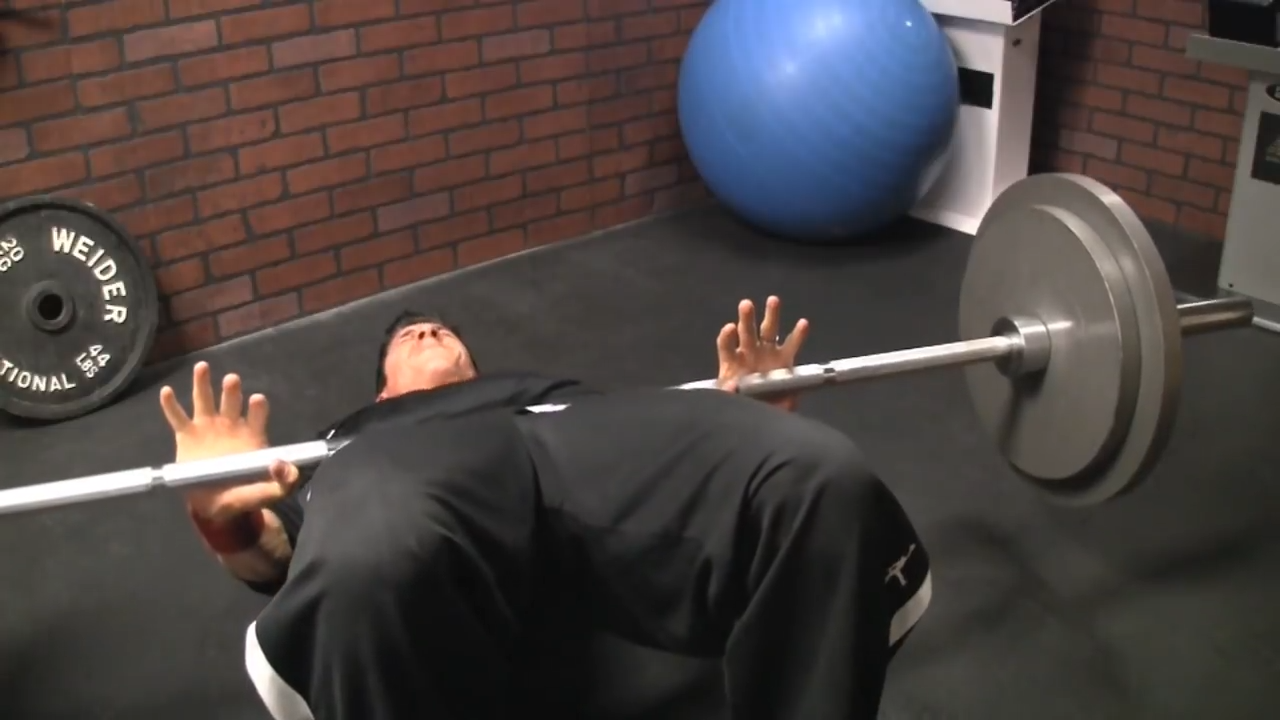
ADDITIONAL NOTES ON FOCUS
You may have seen me with my hood flipped up on a few of those images. There’s a good reason for it.
When it comes to my legs, I really want to focus because I can’t afford to have even a single bad rep for the sake of my knees. If I flip up my hood, it allows me to focus with less visual distraction on the task at hand. Headphones can also help with distraction from noise.
Also, I really concentrate on every single rep of every exercise I’m doing.
That’s the purpose of the pause reps and the isometric hold. These are techniques that help you concentrate and focus on every rep.
I want to be zoned in, because for me it’s really serious and important to take care of my knee joints. My knees can’t absorb many more bad reps in my lifetime before I can’t use them at all. Causing myself severe knee pain or a permanent injury isn’t an option.
Make sure you take care of yours too, by performing leg exercises that are safe for your knees, and by really focusing on what you’re doing.

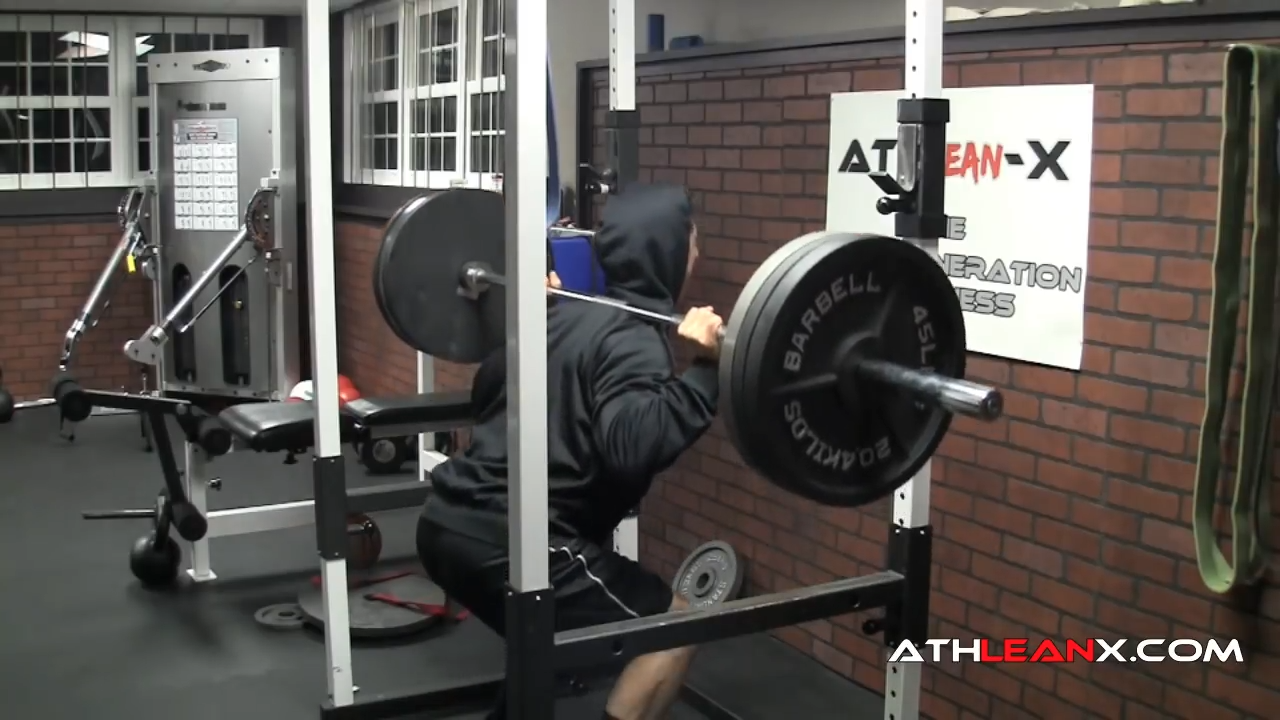
The key to training legs with knee issues is to take care of the knees by shifting force back and down, while at the same time, not neglecting any important leg training element. You’ll want to try to overload the quads and hamstrings using ‘safe for knees’, closed-chain exercises with your feet on the ground.
It’s important to have as much athletic carryover in your leg exercises as possible. This means including unilateral exercises and split stances like the lunge and split squat because these transfer over to movements we need to perform as athletes.
If you’d like to train your legs and every other muscle group intensely and safely, check out our ATHLEAN-X programs. Start training like an athlete and build explosive muscle from head to toe.

- If you’ve stopped training legs because of knee joint pain or bad knees, that’s a huge mistake! It is possible to get a killer leg workout without causing additional damage to the knees.
- When doing lower-body exercises with knee issues, it’s important to keep the exercises closed-chain and functional. You still need to incorporate athletic movements and you can still overload the legs.
- Great care needs to be taken in choosing the right exercise program that decreases stress and strain on the knees. Many of the most common leg exercises can strain the knees and ultimately cause chronic pain.
- Intense focus is required to ensure that you don’t perform a single bad rep.

Jeff Cavaliere M.S.P.T, CSCS
Jeff Cavaliere is a Physical Therapist, Strength Coach and creator of the ATHLEAN-X Training Programs and ATHLEAN-Rx Supplements. He has a Masters in Physical Therapy (MSPT) and has worked as Head Physical Therapist for the New York Mets, as well as training many elite professional athletes in Major League Baseball, NFL, MMA and professional wrestling. His programs produce “next level” achievements in muscle size, strength and performance for professional athletes and anyone looking to build a muscular athletic physique.
































